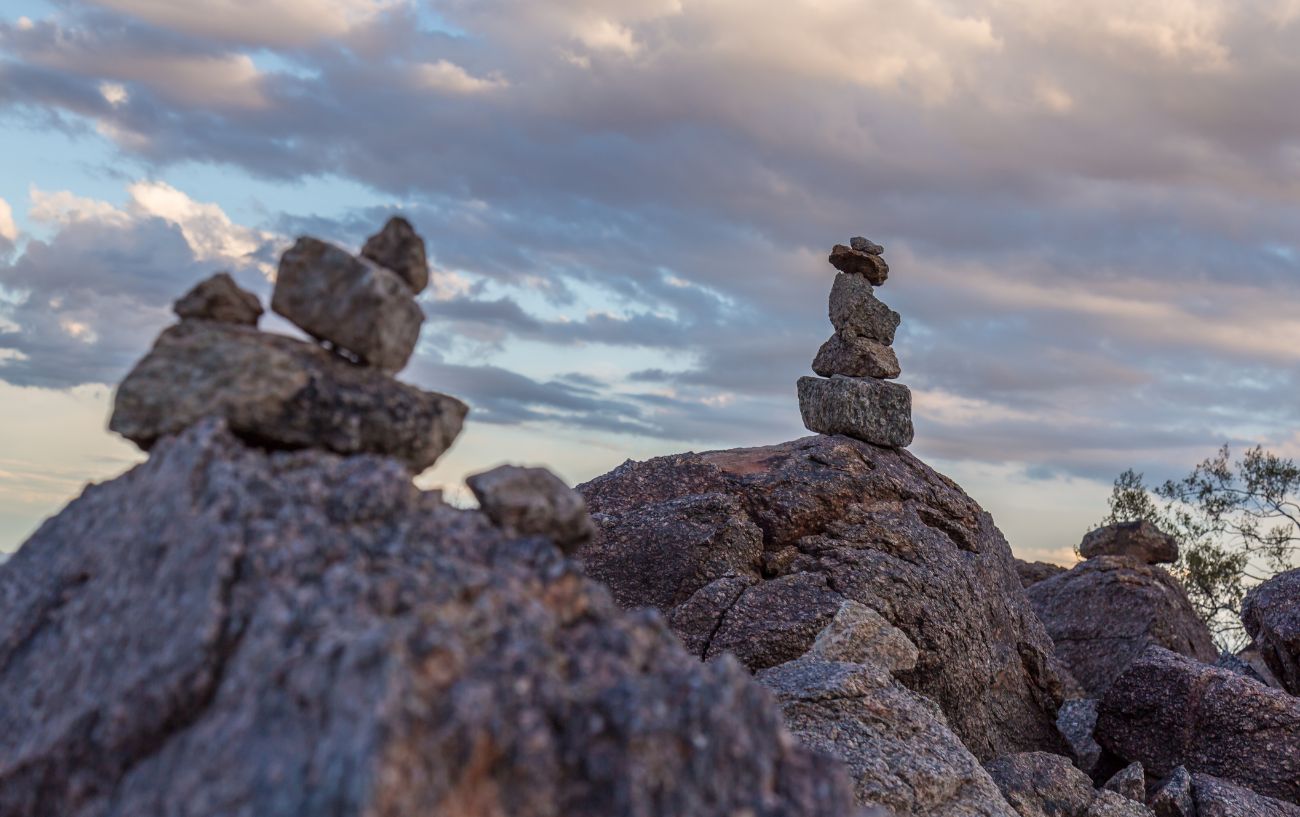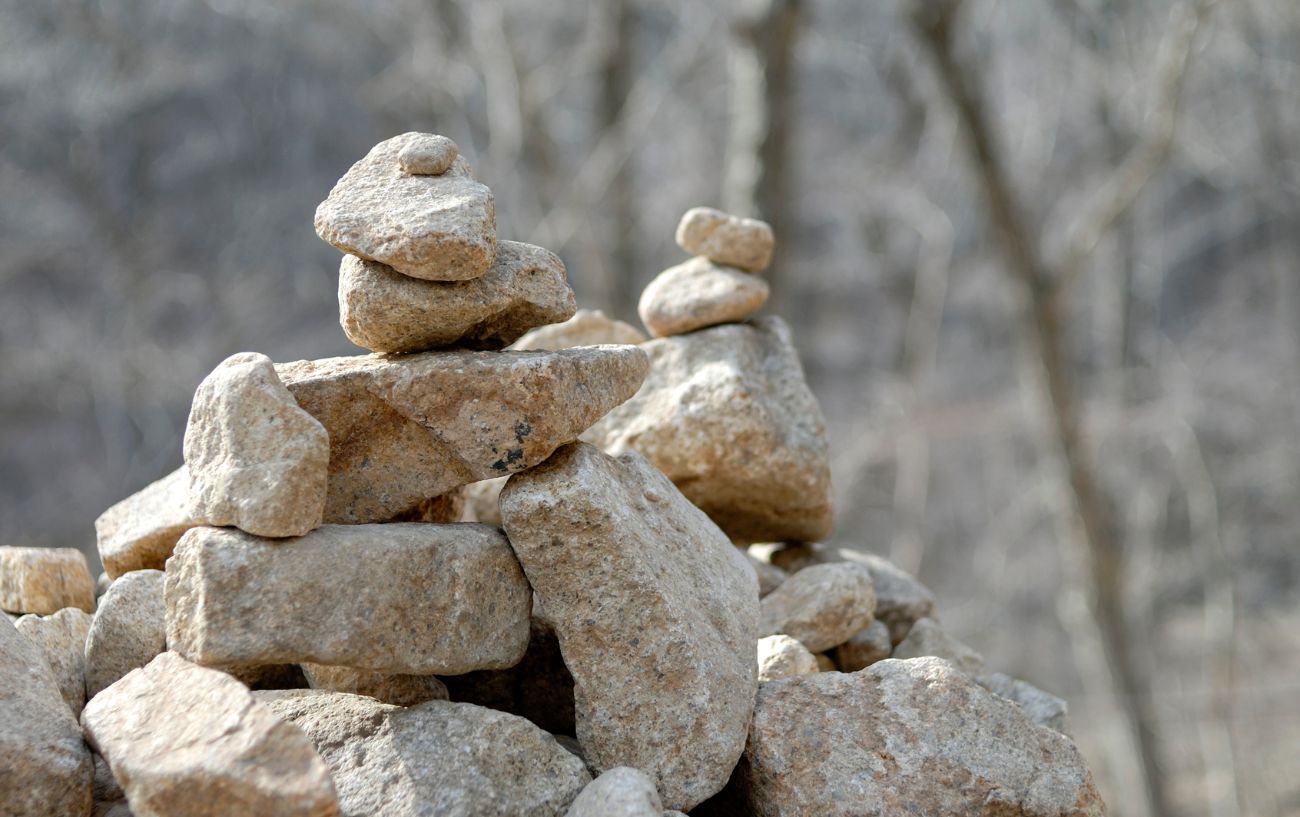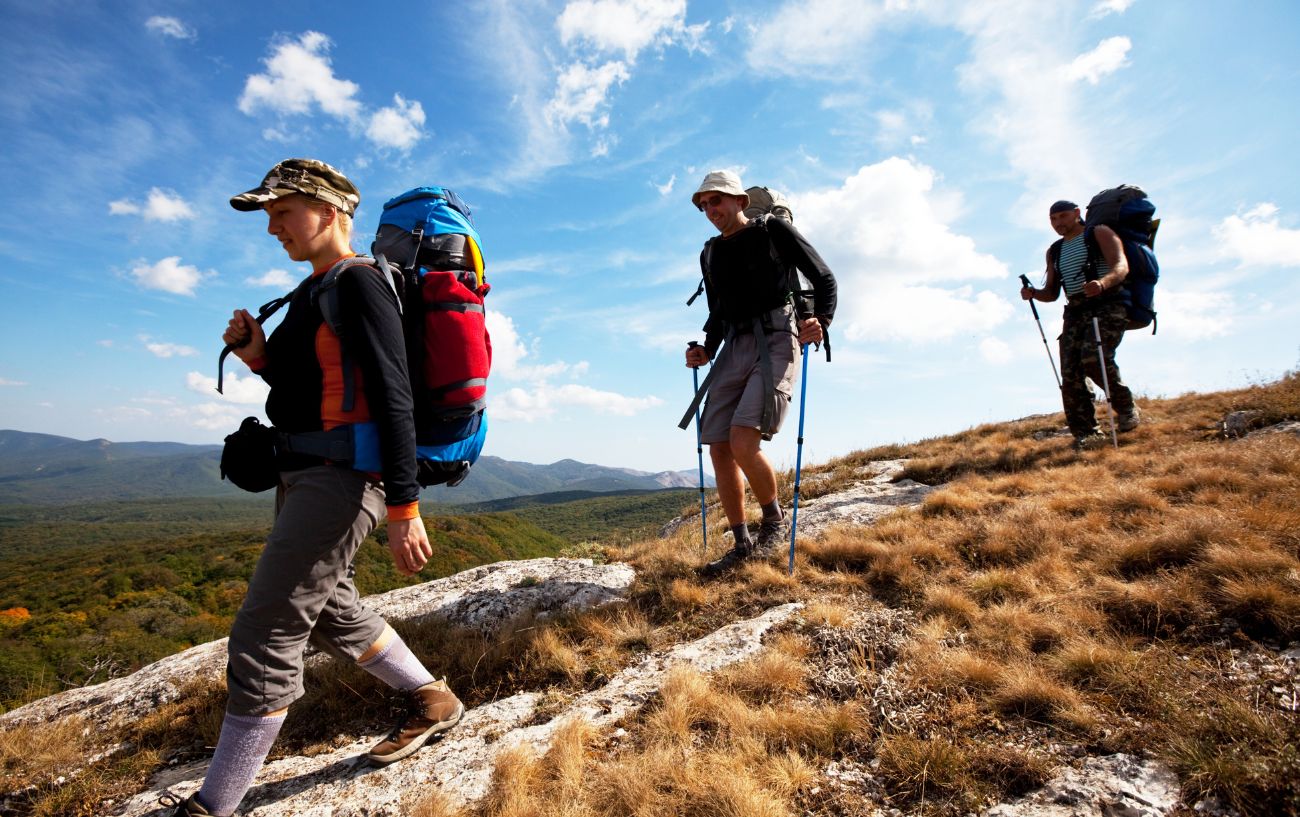If you’ve ever enjoyed a hike in a national park you may have noticed a stack of rocks on the trail.
But what do stacked rocks on a trail mean?
Also called cairns, these stacked rocks are trail markers and navigational aids for hikers, crucial before GPS, but still very relevant today.
There are also deeper meanings behind many of these rock balancing formations.

Stacked Rocks Meaning
Man made stacked rocks on a trail is called a cairn.
The term cairn comes from the Scottish Gaelic word càrn, which translates in English as ‘heap of stone’.
These stacks of rocks have been used since ancient times and serve as navigational aids to denote that you are following the correct path.
Rock cairns are often located in areas of the trail where the path might fork, and hikers would potentially be unsure which direction to walk. Historically, they were also used to mark the location of a cache of supplies like food and water.
A leave-no-trace way of keeping hikers on trail.

Where Are Cairns Used?
These piles of rocks are most often erected at the juncture of trails shortly past the junction along the correct path.
It’s also most common to find them on mountaintops, river crossings, and desert trails. Here, they have additional meanings.
Atop a mountain, the cairn may denote the actual summit or highest point and may conceal a summit register you can sign to log your achievement.
Stacks of rocks at a river crossing can point to the easiest path to forge the river.

3 Problems With Stacked Rocks On a Trail
Although cairns have been used as navigational aids since ancient times, their use in the modern day is becoming more controversial.
1. It disrupts natural ecosystems
Some hikers and conservationists believe that stacking rocks on trails still disrupts the natural land and is essentially a form of “litter,” making a motion that stacking stones on trails is a practice that we abandon.
Moving rocks in a forest or natural landscape can disrupt the ecosystems and habitats of animals.
2. Rocks can fall & are unreliable
Moreover, unfortunately, the utility of cairn building on a trail isn’t always as reliable as hikers would like them to be.
Rock stacks are liable to topple over, whether from inclement natural weather or at the hands of other hikers or children.

3. Hikers can make ‘unoficcial’ routes
Another problem with stacked rocks meaning “this is the correct path,” hikers might make their own unofficial cairns along the trail in inappropriate locations.
Essentially, these unofficial stackers act as red herrings. If they look legitimate enough but are put in the wrong place, hikers will be sent in the wrong direction.

Unfortunately, there’s not really an easy way to know for certain if you’re looking at a genuine cairn or a fake stack of rocks on a trail that someone made in an act of tomfoolery.
For this reason, as fun, as it might be to stack stones on a trail when you’re taking a rest, either resist the urge or be sure to disassemble your rock pile before continuing on your way.
The Spiritual Significance Of Stacked Rocks
As well as being stacked for practical reasons, found in Japanese Zen gardens, or stacked as an art form, the practice can hold spiritual meaning.
Vortexes: Some people also make stacked stones to mark “vortexes,” which are areas where they believe that the energies of the universe are in complete harmony and balance.
In Native Americal Cultures: Stacked rocks are also present throughout some Native American cultures. These hold a wide variety of meanings, including being a symbol of strength, a physical representation of prayer, or a sign about the location of food or water1 Dungan, R. (n.d.). What’s with all those stacks of stones in the woods? The Arizona Republic. Retrieved February 26, 2024, from https://eu.azcentral.com/story/news/local/best-reads/2015/10/23/cairns-stone-rock-stacks-sedona/32413703/.
Burial Sites: In Mongolia, stacked rocks are placed atop of burial sites and in cementaries to honor the deceased.
Buddhism: In some Buddhist traditions, stacking stones has a spiritual meaning of a form of meditation or worship and an offering to Buddha2 Buddha’s Stones: A Stacking Comparison. (n.d.). Tomrchambers.com. Retrieved February 26, 2024, from .
Good Luck: Other people are known to stack rocks as a way to bring them good luck to the stacker and their family.

4 Tips for Using Stacked Rocks On a Trail
Here are some best practices for using cairns when you hike:
#1: Have an Alternative or Backup Navigation Aid
Using a map and compass, trail guidebook, or GPS device for navigation can be a more reliable option than relying on cairns, given the inherent issues.
#2: Don’t Add to Cairns
Trail rangers carefully construct the stacks of rocks on trails, so nothing good can come from adding to them. You might end up causing the stack to fall.
#3: Don’t Disassemble the Cairns
If you stumble upon a stack of stones on the trail, leave it be unless you’re 100% positive it is not a real one. Dismantling it will be detrimental to other hikers.
#4: Don’t Build Your Own Cairns on Trails
Constructing unauthorized cairns can lead other hikers down the wrong path, which can be dangerous.
“Take only photographs; leave only footprints.”
Now that you know the stacked rocks meaning, you may be inspired to look for your next hiking adventure. Take a look at our longest trails in the world and Hawaii’s best hiking trails for some inspiration.














If they aren’t on a trail, just built somewhere else it could signify something else. Some native young adults were camping near us. I had extra ice and hot dogs that wouldn’t fit in our cooler. I offered it to them. The next day they were gone but there were three stacked piles of rocks. Just wondering if it could signify something.